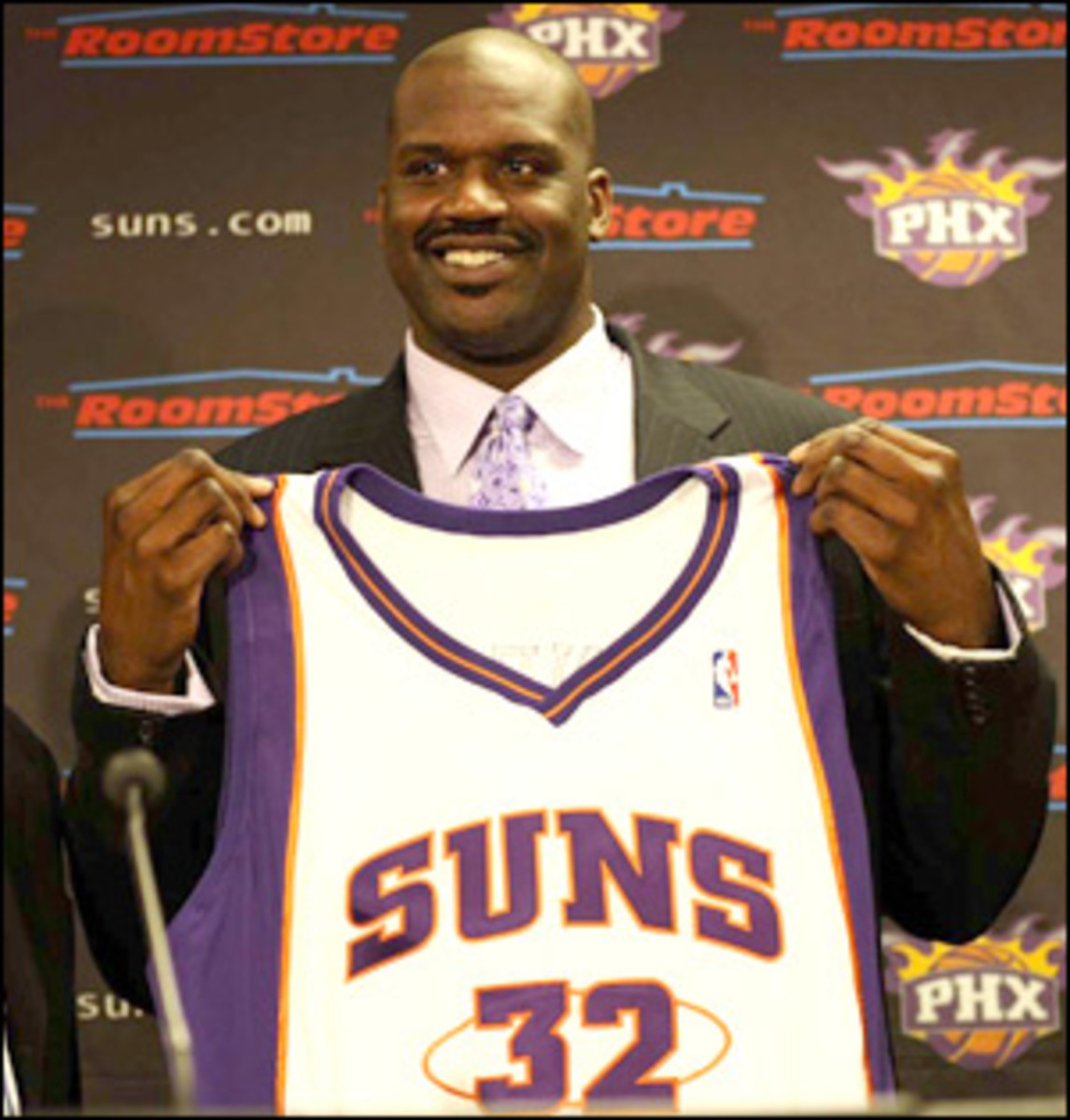The Suns' Big Hunch
The phrases you've been hearing from the Suns after their trade for Shaquille O'Neal are protecting the basket, strengthening the half-court offense and providing more second-chance points. But before those theoretical enhancements can become realities in Phoenix, something much more, well, corporeal must show improvement.
Shaq's butt.
"He has weakness in his gluteus muscles," says Suns trainer Aaron Nelson, who began his work in earnest on Sunday afternoon, when O'Neal returned from Miami to officially begin his tenure as the Big Sunshine. O'Neal also has, according to Nelson, significant tightness in his hips and ankles. These conditions will be addressed by an intense program of manual therapy and exercise, which got into high gear on Monday morning.
All of which is good news, according to Phoenix officials. The medical issues that forced the 7' 1" O'Neal to miss 16 games this season were not, they say, precipitated by structural abnormalities, widespread tendinitis or lingering ramifications from surgeries to his right big toe (a bone spur removed in 2002) and left knee (a scope in 2006). Rather, the tight and weak muscles have prevented him from moving freely. "We can get those areas firing," says Nelson. "It's happened with other players, and we've usually gotten them back."
The Suns were so pleased with what they saw in their initial exam last Thursday -- Thomas Carter, the team orthopedist, said that O'Neal, who turns 36 on March 6, weighed 321 pounds and had only 11% body fat -- that on Monday they anticipated that O'Neal would be in uniform this week. The most likely scenario is that he will start against the Mavericks at US Airways Arena on Thursday.
"I have no idea about minutes," says coach Mike D'Antoni. "We're just going to wait and see how he feels."
The trade, which sent four-time All-Star forward Shawn Marion and reserve point guard Marcus Banks to Miami, has already been dissected and, from the Phoenix perspective, dissed. In an ESPN.com poll, 71% of respondents said that the Suns had been fleeced because O'Neal's days as an elite player are over. Then there's the strange merging -- with just two months left in the season -- of a get-up-and-go track team and a lumbering leviathan. But D'Antoni swears that won't be a problem and cites the 1980s Lakers to bolster his point.
"Do you think Kareem [Abdul-Jabbar] joined Magic [Johnson] and those guys on the fast break?" D'Antoni says. "But they made it work, didn't they?"
Abdul-Jabbar was 40 and 41 years old when the Lakers won back-to-back titles in 1987 and '88. He was third on the team in scoring (17.5 points per game) the first year and fourth (14.6) the second. Of course, he was also a workout fanatic who missed only 35 regular-season games over his last 11 seasons. Shaq, who was averaging 14.2 points with the Heat, missed 74 over his last three complete seasons.
So although the attention will focus on what Shaq does between the lines, what he does behind the training-room doors will determine whether the trade was a grand success or a spectacular failure. "The athlete, in this case Shaq, is motivated by how much better he feels and how much closer he is to being a hundred percent," says Nelson of the rehab regimen. "But that doesn't mean it isn't painful and exhausting. It's lots of hard work." Shaq's heart, and his butt, will be on trial.






